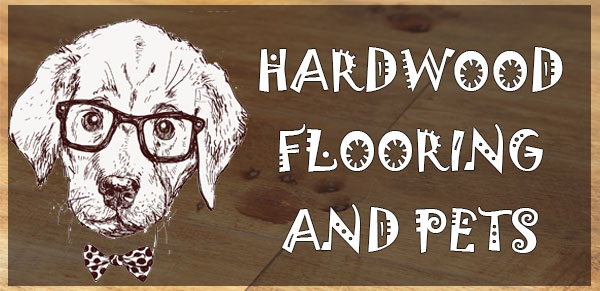
Many people would consider that having pets and a hardwood floor is mission impossible. And they are right, except one little detail. Having pets, a wooden floor that can be pet-friendly and a smart maintenance routine is a mission possible, time-proven and entirely successful! One of the biggest myths about wood flooring we have heard and want to bust today is that pets, especially the dogs, and wooden surfaces do not go along. Although real situations and bad experience a number of households can offer to prove this right, we are stating that the foundation of the problem is inappropriate maintenance and generally inappropriate type of flooring and finish that often result in distressed wooden boards and all the blame attributed to the poor quadruped fellows, when their responsibility is just a fraction of the entire situation!
Pets are one of the common thumbs down reasons for many homeowners that consider purchasing and installing a new real wood flooring. We can easily see and understand all reasoning that causes the denial of one great home and interior design improvement idea and a dream for many people that admire the natural and elegant beauty of wood. Scratches, stains and all sorts of imperfections are a common struggle for many people that own at least one four-legged pet and such a type of natural product. The decision often is narrowed down to you either keep your pet, or you purchase a new flooring. However, it does not have to be that way! There is no need to choose between one or another and this is why today we are sharing a few successful and efficient ways to maintain wooden floorboards in perfect condition and appearance even if you have a four-legged member of your family that enthusiastically runs around the house every time the doorbell rings, or just yet acquires toilet and hygiene habits. Only a few neither complex nor time-consuming simple rules can save the day and allow you the double pleasure to own them both – a happy pet and a happier wood flooring!
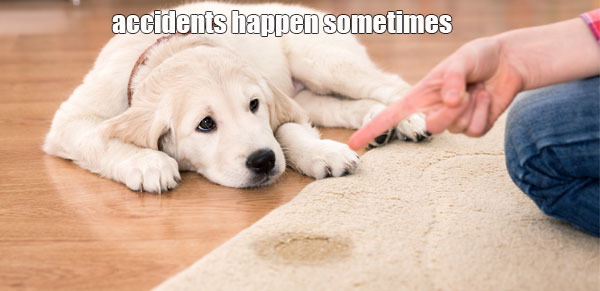
By all means, having a cat or a dog and a wooden floor you want to look perfect could be quite a challenge! Do you know that 40% of the UK households own a pet? The full source statistic you can find here. Dogs and cats are dramatically dominating the common choice of pet owners with respectively 24% and 17% and this makes a lot of doggie and kitty cat nails, right? Add a plenty of shedding, surprising spills here and there, often a handful of stains and unfortunately a lot of mess. Furthermore, wood certainly does not like liquids, so urine and vomit, not to mention all the spills from water dishes or bowls, are all potential threats to the wood. Add to this the important fact that cat urine and dog urine can leave permanent stains and nasty odour. Even ‘though UK dogs and cats are raised to be well-mannered ladies and gentlemen, they are still cats and dogs and love some fun that is not necessarily a good thing for wooden surfaces, wood flooring especially. Let’s start with the worst and leave the best to the end, here are the most common hardwood flooring issues caused by animals (mainly cats and dogs):
- Scratches and dents – Scratches and dents are often the first things that pop into your head, when thinking of the combination of wooden surface and dog’s or cat’s nails and you are right to worry about that. In fact, there is not much to do in order to stop your pet scratching the floor and all accessible surfaces around the house, but keeping your pets’ nails trimmed on a regular basis will help a lot for avoiding major scratches and dents.
- Spills – accidents that happen often in households with pets. Spills are also accidents that happen often in households without pets! In general, spills happen often and you don’t need to blame your pets only for spilt food or liquids. There is no place to worry and panic, spills won’t damage your wooden floor in case you react immediately and wipe them off as soon as possible! Permanent stains are a result of neglected and procrastinated wipe off of the spill, not a result of the spill itself.
- Urine and vomit – Let’s get real-real! Every cat and dog owner knows that urine and vomit stains/spills happen from time to time. Instead of shaking your head in regret and panic, better gather your energy, brace yourself and attack the mess as soon as you notice it prevent permanent stains, odours and damages.
- Eating area – The eating area of your pets is often a subject of a lot of mess and pretty serious damages. To prevent stains and distressed wooden floor, try to relocate the eating area of your pet from a room with a wooden floor to a room with tiles or stone flooring. If this is not possible, or your entire house is covered with wood flooring, then be sure to always place a thick mat under the food and water dishes of your pets. The bigger the better, because the more of the area you are able to cover, the more damages and stains you can prevent and avoid. Replace the mat regularly, because it can hold moisture and dirt and damage the floor underneath, also grow mould, mildew and bacteria.
- Bath time – Pets’ bath time is a pretty challenging experience, especially for cat owners! If you have an engineered wood flooring installed in your bathroom and your pet is not exactly the biggest fan of long and relaxing baths, be sure to cover the entire floor in your bathroom with old rugs and mats to prevent water damages.
- Shedding – Seasonal or non-stop, shedding is an issue for many homeowners that desire to have the perfectly clean home. Pet’s hairs can easily build a serious mess around the house and your wooden floor is not protected too!
- Dirt – If you cat or dog is an outdoorsy animal, you can expect a lot of dirt and dust entering your home after each walk in the great outdoors! Be sure to clean your pet’s paws each time after a walk.
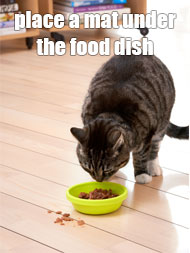
With that being said, having a thorough and regular cleaning routine is a key to well-maintained wood flooring in houses with pets. Usually, a weekly vacuum or a quick clean with a broom with softer bristles that don’t leave scratches is just enough to get rid of the accumulated dust, dirt and grime. Generally, wood flooring is naturally hygienic and easy to maintain in good condition and clean as it does not require too much elbow grease, time and energy. However, houses with pets tend to get dirtier within a week and a more thorough and in-depth cleaning routine might be required. In this case, be sure to vacuum the floor at least twice a week and clean it with a damp mop when needed, but use cleaning products designed for wood flooring only, since they have a neutral pH and are good for both the wood and its finish.
The Best Hardwood Flooring Options For Homes With Pets
Alongside having an effective cleaning routine and an efficient prevention plan, there is one more thing you can do in order to make your life easier, your wooden floor happier and your pet guiltless – choose the right type of wood flooring that won’t struggle with the presence of cats and dogs that dramatically and is less prone to common damages and issues!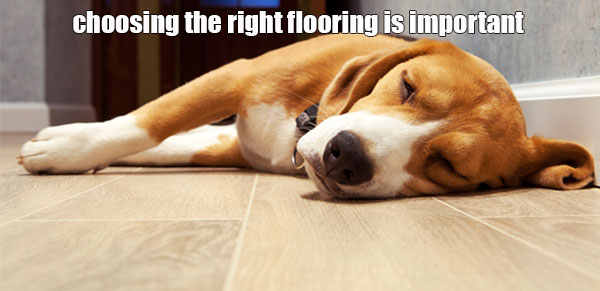
As you know by now, hardwood floors come in different sorts. Initially, you have the solid wood, engineered wood and parquet types. Next, you can choose between the four main groups of grades – prime, natural and rustic. The wood’s grade is not equal to quality, but more related to appearance. The more natural pattern like knots, swirls and sap your wooden floor has, the more it fall into the groups of natural and select grade and, respectively, the cleaner and more uniform look the closer wood is to the other group – prime. Once you choose the type of hardwood flooring and its grade you have to consider the best wood species to fit your needs, lifestyle and preferences. Today’s market offers wooden flooring that can be made out of a number of domestic and exotic wood species. The difference between all these wood species is not only their appearance, texture and colour, but also their hardness, sensitiveness to moisture and shock, resistance, durability, hard-wearing and long-lasting power and more. As you may guess, pretty aggressive indoors environment like a household with at least one pet will suggest your need to choose a harder and better at shock-resistance wood species. Finally, your choice of finish is from a crucial and essential importance for your wooden floor and its appearance and condition. Here are the best wood flooring options for homes with cats and dogs:
- Prefinished VS unfinished – When purchasing a new real wood flooring you have the option to choose between prefinished and unfinished wooden boards/planks. The main difference between these two is that the first option leaves the factory with a couple of layers of finish that are already applied and the wooden boards are ready for installation once they are delivered to your home. Although prefinished hardwood flooring often means less hassle and fuss, the unfinished option is highly recommended because it comes with a few more benefits. As you may guess, if you buy unfinished wooden boards, you will be able to choose the right type of finish that meets your needs and is suitable for your lifestyle as well as the specific requirements for a household with pets. On another side, prefinished boards are not worth underestimating, because most of the leading manufacturers these days are using an Aluminum Oxide finish that makes a strong surface coating and can be additionally provided with UV light protection.
- Colouring – Wood floors can be stained in different colours and with different sorts of pigment products for enhancing the natural colour of the wood species or completely transforming it into something new and exciting. While the extra coat of pigment won’t offer additional protection from scratches and extra durability, some colours can work in your favour and hide effectively fine scratches and smaller dents. Generally, lighter colours are better at camouflaging the smaller imperfections that darker woods.
- Grades – As we have mentioned above, wood flooring grades are the four main categories that wood’s natural pattern and texture is classified at. The more characteristic natural pattern your floor has, the more scratches and stains can be camouflaged. Additionally, bold and characteristic patterns are catching the eye and making a statement, distracting the eye from all imperfections and issues.
- Textures – In modern days you can own a really uniquely designed and customised wooden floor with the help of surface textures and effects. Exactly like colouring, the surface texture that is additionally achieved by a specific treatment, won’t add much protection and prevention of original wood’s texture and colour, but it will camouflage imperfections and distract your attention from finer scratches and stains. Hand scrapped wood flooring is a highly popular trend for the past few years and allows you to enjoy a trendy floor with a unique texture and minimise the appearance of scratches and dents.
- Wood species – According to the Janka rating system, different wood species used for the manufacture of wooden flooring are categorised into different groups based on natural hardness. Red oak is a common domestic wood flooring species that is taken as an average indicator. Pine, birch and beech are, for example, wood species with lower hardness and durability and although easy to installation, usually more prone to scratches, dents and other imperfections. Generally, exotic wood species like Brazilian walnut or Brazilian cherry are considered to be the hardest one, however harder to install and perform treating like sanding and sealing.
- Finish – All of all factors, the type of finish you choose for your wooden floor is probably the most important and essential one, especially if you own pets like dogs and cats. The finish of your floor is its protection on the surface and within the whole construction, it is the barrier between bare wood that is prone to damages to some extend and the environment, be it high traffic, water damages, moisture and, of course, your pets. There are many wood floor finish options you can choose from, but if you own pets, we recommend the oil finishes the most. Here is why…
Why Oil Finishes For Wood Floors Are The Best Choice For Pet Owners?
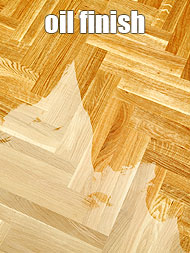 Oil finishes are like the new kid on the blog, they are relatively new to the wood flooring market, but gained popularity very quickly because of all the benefits they come with. The main benefits of oil finishes include the fact they are giving a unique and beautiful texture. But first, the difference between oil finishes and all other conventional wood floor finishes available on the market, including lacquer, varnish, etc. Generally, oil finishes are penetrating one and this means that unlike varnish or lacquer, oils are not only creating a protective and resistant to moisture and shock barrier on the top of the floor, but also penetrating into wood’s structure and ensuring protection and preservation of colour and texture from within. Thanks to this ability, wood floors finished with oil are very durable, well-protected, resistant to a number of issues. However, it is important to mention that oil finishes are not that highly resistant to scratches and dents and lacquers and varnishes are more hard-wearing and long-lasting. On another hand, oil finishes ensure a very natural look and texture of your wooden floor. Unlike lacquer, oils are keeping the natural texture and colour of wood and enhancing and highlighting this natural beauty. Thanks to this quality, scratches and dents are very well camouflaged and way harder to notice than in case a lacquered wooden floor is scratched and damaged.
Oil finishes are like the new kid on the blog, they are relatively new to the wood flooring market, but gained popularity very quickly because of all the benefits they come with. The main benefits of oil finishes include the fact they are giving a unique and beautiful texture. But first, the difference between oil finishes and all other conventional wood floor finishes available on the market, including lacquer, varnish, etc. Generally, oil finishes are penetrating one and this means that unlike varnish or lacquer, oils are not only creating a protective and resistant to moisture and shock barrier on the top of the floor, but also penetrating into wood’s structure and ensuring protection and preservation of colour and texture from within. Thanks to this ability, wood floors finished with oil are very durable, well-protected, resistant to a number of issues. However, it is important to mention that oil finishes are not that highly resistant to scratches and dents and lacquers and varnishes are more hard-wearing and long-lasting. On another hand, oil finishes ensure a very natural look and texture of your wooden floor. Unlike lacquer, oils are keeping the natural texture and colour of wood and enhancing and highlighting this natural beauty. Thanks to this quality, scratches and dents are very well camouflaged and way harder to notice than in case a lacquered wooden floor is scratched and damaged.
Considering the fact that lacquer finished wood floors are often highly glossy and shiny, even the finest scratch shows up and is highly noticeable, but the natural texture on the surface that is achieved with the help of an oil finish makes finer scratches and dents particularly invisible. Adding to this the fact that oil finishes are pretty easy to maintain in good quality and keep clean, we are convinced that oiled wood flooring and pets are not simply a thing possible, but even the best choice for each household with a dog, cat or two. Having your wooden floor finished with high-quality oil helps each and every pet owner to enjoy a natural, distinctive and very beautiful appearance of a classic or modern wood flooring and not get worried about the fact that pets can easily destroy this appearance and ruin the entire look of the floor. The only thing you need to be aware of is the fact that oil finishes wear off quicker and for shorter time period than other options on the market, but the refinishing and process is really bearable and no hassle and stress at all, because oiled floors usually won’t require sanding treatment, but only a couple of fresh layers of oil.
